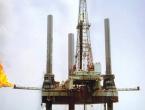EUR/USD
1.17801
0.236%
Gold
4328.37
0.538%
Oil
55.461
-1.849%
USD/JPY
154.854
-0.226%
GBP/USD
1.34287
0.388%
GBP/JPY
207.954
0.171%
On December 16th, Peter Anderson, founder of Anderson Capital Management, commented on the latest non-farm payroll data, stating that investors hope for a smooth run without any surprises, and even if there are fluctuations, they shouldnt be too significant. Even a slight increase in the unemployment rate would increase the likelihood of further interest rate cuts. However, as weve seen in the past, this isnt a consistently consistent trend. "Were now seeing some divisions within the Federal Reserve Board. Some people opposed the recent rate cut decision, and theres also a high level of focus on who will lead the Fed. Therefore, the Fed is currently in an unprecedented state of distraction, and it wont make any major policy decisions until all these issues are resolved."Acting Chairman of the White House Council of Economic Advisers (CEA), Yared: Inflation is "returning to normal" and back to historical levels.Acting Chairman of the White House Council of Economic Advisers (CEA), Yared: The rise in the unemployment rate should not be over-interpreted.December 16th - Lenovo Group announced that it is working closely with Infineon Technologies to accelerate the next phase of autonomous driving. Lenovos flagship domain controllers, AD1 and AH1, integrate Infineons AURIX™ microcontroller technology, providing robust support for Advanced Driver Assistance Systems (ADAS) and achieving superior energy efficiency and high-speed data communication across vehicle networks.New York gold futures broke through $4,350 per ounce, up 0.34% on the day.











